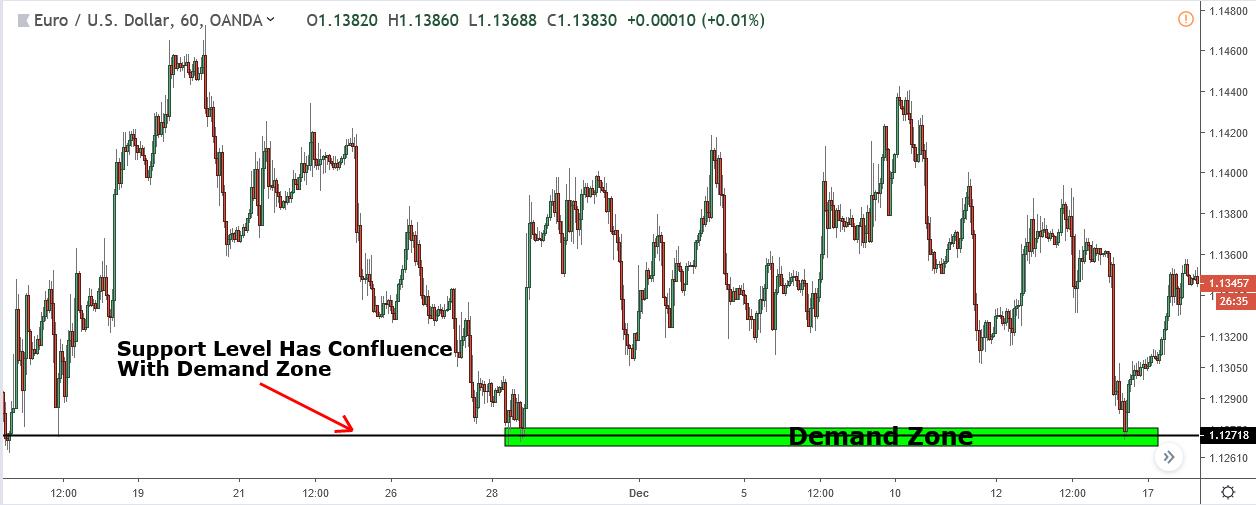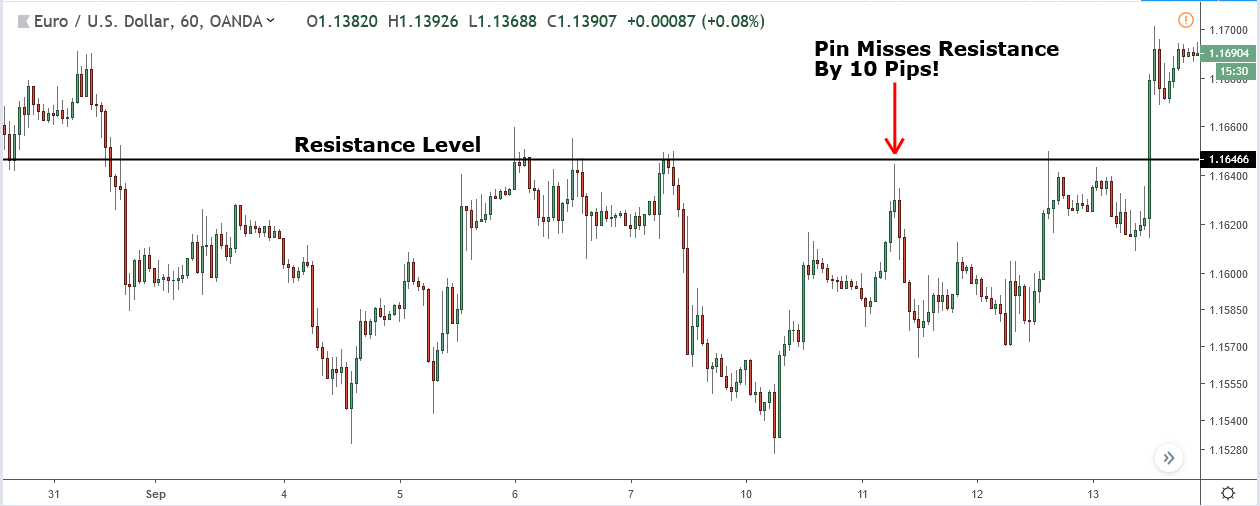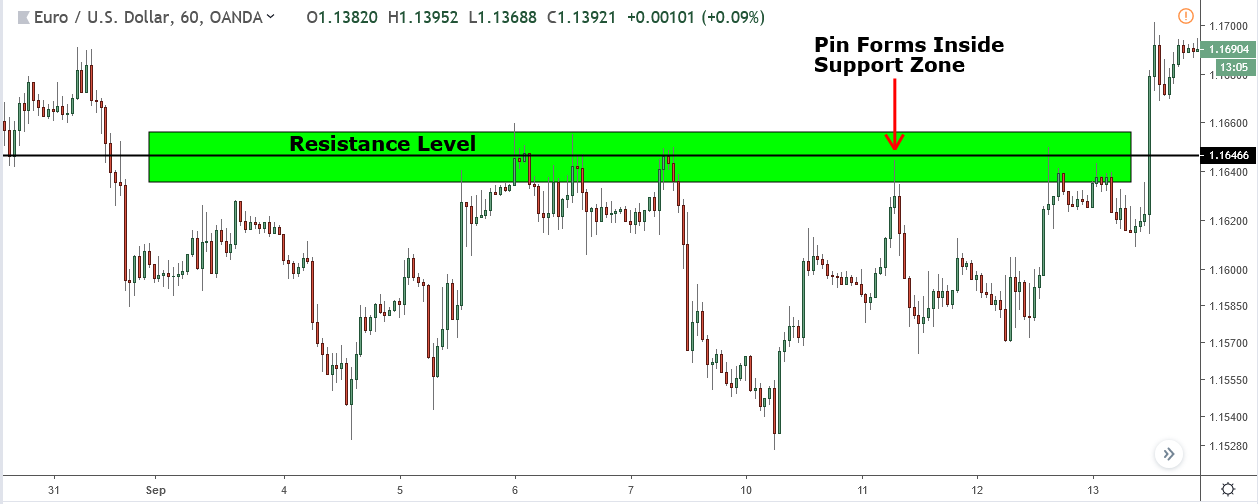Did you know…
Support and resistance levels don’t actually gain strength with each failed breakout attempt?
And here’s another shocker:
There’s a unique way to mark SR levels that can dramatically increase your profits and lower your risk.
Skeptical? I get it.
But I’m here to reveal 4 mind-blowing secrets that will change your approach to support and resistance trading.
Ready to unlock the true potential of these levels?
Let’s dive in!
1) Debunking the S&R Fallacy: More Touches Don’t Equal Stronger Levels
What’s one of the main ‘fact’s you get told when learning how to trade support and resistance levels?
Oh, yeh:
The more times the price fails to break a level, the stronger that level becomes.
Make sense?
Sure does…. but is there any truth to it…
Absolutely NOT.
The idea that a support or resistance level gets stronger the more times the price fails to break it is one that, on the surface, sounds perfectly reasonable, but in reality doesn’t add up.
Think about this for a minute…
If a level gets stronger each time the price fails to break it, then that must mean people keep buying (or selling, in the case of support levels) at the level for the same reason.
I mean, they must like it for a reason, right?
But does it really make sense that people buy or sell to stop the price from breaking a level days, weeks or even months later even though the entire outlook of the market has changed?
It doesn’t does it.
And yet that’s exactly what most price action guru’s, as well as many books, state as to why support and resistance levels get strong with multiple touches.
Now don’t get me wrong…
I’m not saying NO support and resistance levels stay strong after multiple touches, because many of them they do…
Take the 1.00000 level on USD/CHF for example.
This level used to be pegged to gold, which meant every time the price got near it went dropped (until the Swiss removed the cap, of course).
But levels like this, that have a real-world reason why they’re strong, are the EXCEPTION, not the rule.
The normal levels that we see everyday DON’T have any real-world reason backing them, which is why they don’t get stronger the more times the price touches them.
Now I know what you’re thinking…
“If the levels don’t get stronger with multiple touches, how do I know which are strong and weak?
Well, there’s a couple of ways…
One of the best is to look for the levels that have two or three recent (recent, depending on time-frame of course) touches that haven’t yet been broken.

When a support or resistance level breaks and then price fails to break through two or three times in a recent succession, it’s often a sign the banks and other large players are buying or selling to make the price reverse.
So if you want to find levels that have a high chance of being successful, look for the ones that have two or three recent touches that haven’t been broken, as it’s probably been created by the banks.
2) Why Higher Timeframe Levels Trump Lower Timeframe Levels
Now that I’ve put to bed the myth of “the more price fails to break a level the stronger the level becomes” it’s going to be a lot hard to figure out which levels are strong or weak, isn’t it?
Well, not exactly…
You see, there’s another way to find strong levels…
Higher time-frames
Support and resistance levels form as a result of people buying or selling at a similar price to where they or other people have bought or sold in the past.
So far, so price action 101.
But here’s the thing:
Someone that buys or sells to cause a level to form on a higher time-frame has a longer-term outlook on the market, which means they’re more likely to buy or sell when the price returns to the level.
See where I’m going with this?
And that, as a result, means high time-frame levels have a better chance of causing the price to reverse when used on a low time-frame.
So an easy way to find strong support and resistance levels is to simply go one or two or time-frames above what you’re trading off and then use the levels on there as points to watch for a reversal.
“But which time frames should I use?”
Here’s a quick guide:
If you trade on the 1, 5 or 10-minute time frames (and anything in between that), use levels drawn on the 15 min and 30 min time frame.
If you trade on the 15, min, 30 min or 1-hour time frames, use levels marked on the 4 hour or daily time-frames.
If you trade on the 4 hour or daily time frames, use levels drawn on the weekly time-frame.
3) Support And Resistance Levels Can Provide Awesome Confluence
Okay, so this one isn’t really a secret but it is very important to know.
One of the keys to finding high probability trade setups is to look for confluence.
“Confluence, what the heck is that?”
It’s when two or more technical tools or techniques line up at the same point or give the same information about what the price is going to do.
For example…
If a MACD showed divergence when the RSI was overbought, that would be a sign of confluence, because both tools are saying the same thing; that the price is likely to reverse.
Whilst it’s possible to find confluence with almost technical tool or techniques, support and resistance are by far the best, for one very key reason…
Versatility.
Most of the tools or techniques you can use to find confluence only work in combination with other tools/techniques or in certain situations, like fibonacci retracement for example.
Support and resistance levels, however, work with everything.
You can use them to find confluence with trendlines, fibonacci retracements, candlestick and chart patterns, technical indicators…
You can even use them to find confluence with supply and demand zones.

This rugged versatility is what makes support and resistance levels such a good technique for finding confluence. And I recommend that I’ve you’re trying to find confluence with a tool or technique, support and resistance levels should always be your first port of call.
4) Support & Resistance: Why Zones Perform Better Than Lines
Now it’s time to talk about what I think is the biggest support and resistance secret…
Since they were created, support and resistance levels have been drawn as single lines that mark a small set of prices where a currency or asset can reverse.
This is seems like a profitable method (in practice!).
But how many times have you marked a support or resistance level, waited for the price to reach it, only to then see it reverse just a few pips before touching it and giving you an entry into a successful trade?
Many times, I bet.
The SOLE reason this happens is because the levels are drawn as lines. But there’s a secret way to fix it that not many people know about:
Marking support and resistance levels as zones instead of lines.
A zone covers a much bigger area than a line, which makes it much easier for the price to reverse.

See how the price just misses this support level by a few pips?
This what usually unfolds when you mark the levels as line, but watch what happens when you mark the level as a zone instead…

The pin forms inside the zone, giving you a signal to enter a trade.
So rather than miss the trade – which you would using it as a line – the zone keeps you in and gives a successful trade signal.
Summary
So there you have it….4 secrets to trading support and resistance. I know these weren’t ALL exactly ‘secrets’ but there are things I think you should know, and they will help you out in your trading.

That’s great and edge in markets! But the attached link of Support and Resistance Zones. It won’t open!
Thanks for sharing and let us learn..
Very straightforward!
Once u open up an academy or paid group let me know by email so as i can join right away…in order to gain more knowledge
Thanks, Gian. The membership section will be up in a couple of weeks – I’m just trying to get some technical things sorted out and a few posts finished before I launch it. Once it’s ready, I’ll let you know so you can join.
I’m waiting..
HI, when will u open the membership section, and how much of it
thx